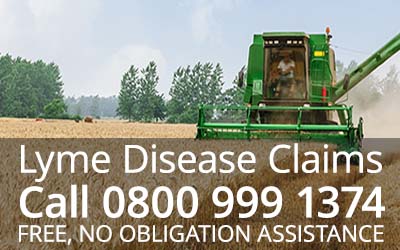
What Causes Lyme Disease?
Lyme Disease is a zoonotic illness – meaning that it is spread from animals to humans, and is carried by infected ticks. Ticks are tiny creatures from the same family as spiders, who live on the blood of animals. They attach themselves to their host using their mouth, but are so small that many bites go unnoticed, both on humans and animals. Once they have attached themselves they will feast on the blood until they are absolutely full and often then fall from their host. This can take anything up to 36 hours. If a tick feeds from an animal that is infected with the Borrelia Burgdorfei bacteria; the bacteria responsible for Lyme disease, it is likely that when it attaches itself to its next host it will pass on the bacteria, whether that next host is another animal, or a human being.
Ticks live in grassy areas and woodland areas around the world but are particularly prevalent in areas of North America and Europe. They are most active between early spring and autumn and commonly attach themselves to their host while he or she passes through the long grass or woodland. They prefer warm environments and once they identify and climb aboard their host, they will often move across the surface of the skin until they find somewhere warm and moist – such as an armpit or groin, before tucking in. As a result the bites are often quite difficult to find, as they rarely hurt or itch and can often go completely unnoticed.
Ticks can pass on a range of diseases to their host, depending on the type of tick and the nature of the host: some are drawn to dogs, cattle, sheep, deer and even rodents, but bites from these ticks are unlikely to cause disease in humans. It is important to understand that within the UK the majority of ticks do not carry the bacteria that cause Lyme Disease, and even if you are bitten by one that does, it is not guaranteed that you will develop the disease.
If you are bitten by an infected tick, the bacteria will start to spread from the bite area into the surrounding skin, often causing the recognisable ‘bullseye’ rash. At this stage if it is treated properly with antibiotics further symptoms can be eradicated before they get a chance to develop, but if the bite, rash or other symptoms are not recognised in time, then the bacteria can spread throughout the body and take the form of Lyme disease which can be particularly unpleasant and cause a range of symptoms and general malaise.
Call us now on 0800 999 1374 or click here to start your claim.

Claiming For Lyme Disease
Free Legal Advice
If you are unsure whether you can claim compensation for Lyme Disease, then call our personal injury claims team for free, no obligation advice on making a claim. They will ask you some simple questions about your condition, talk to you about what’s happened and can tell you if you have a viable claim for compensation or not. Call us free on 0800 999 1374.
Latest Lyme Disease News
Forestry Worker Claims £80,000 for Lyme Disease
A Scottish man who developed Lyme disease and became seriously ill has launched a legal claim for £80,000 against his employers for failing to do enough to protect workers from the potentially life-threatening disease.Iain MacEchern had worked for the Forestry...




